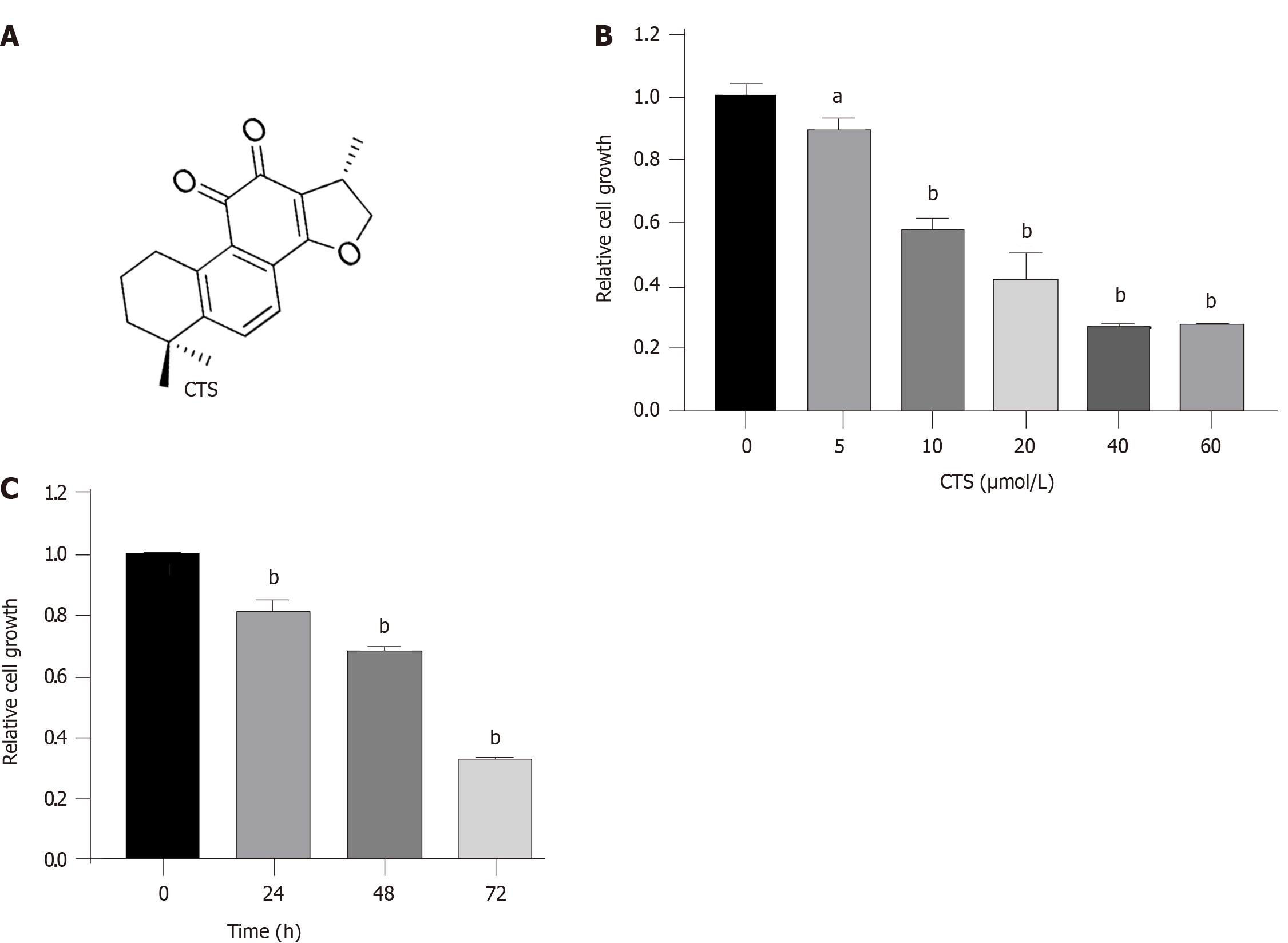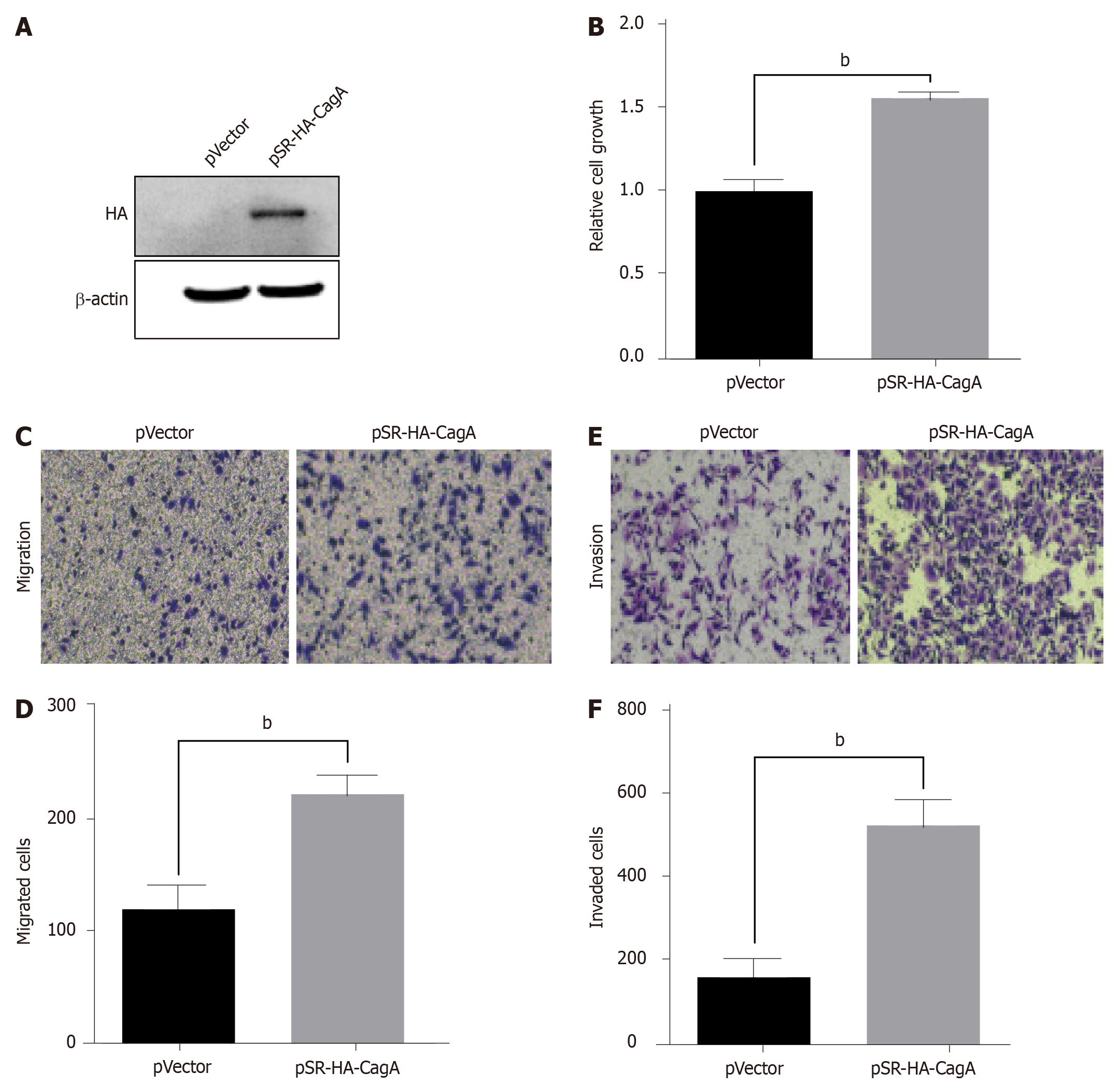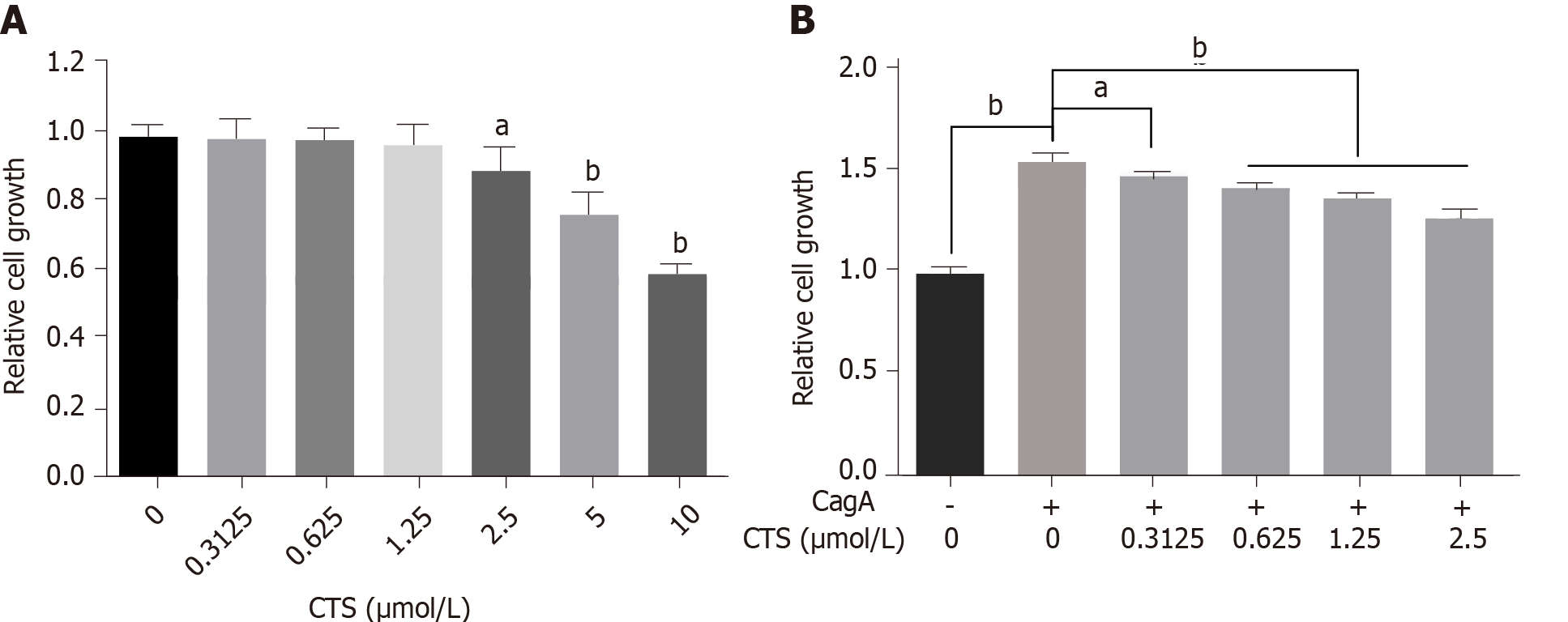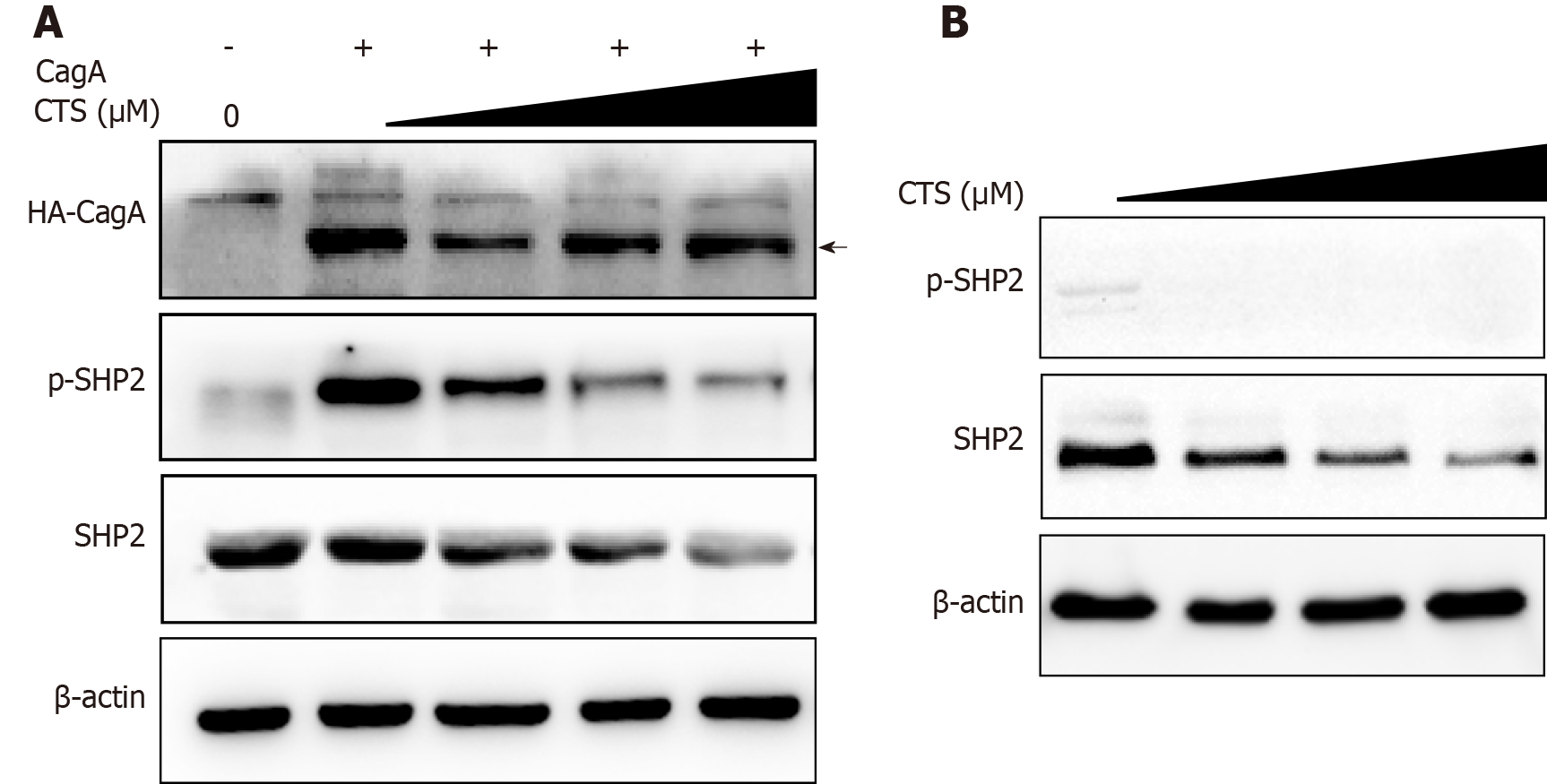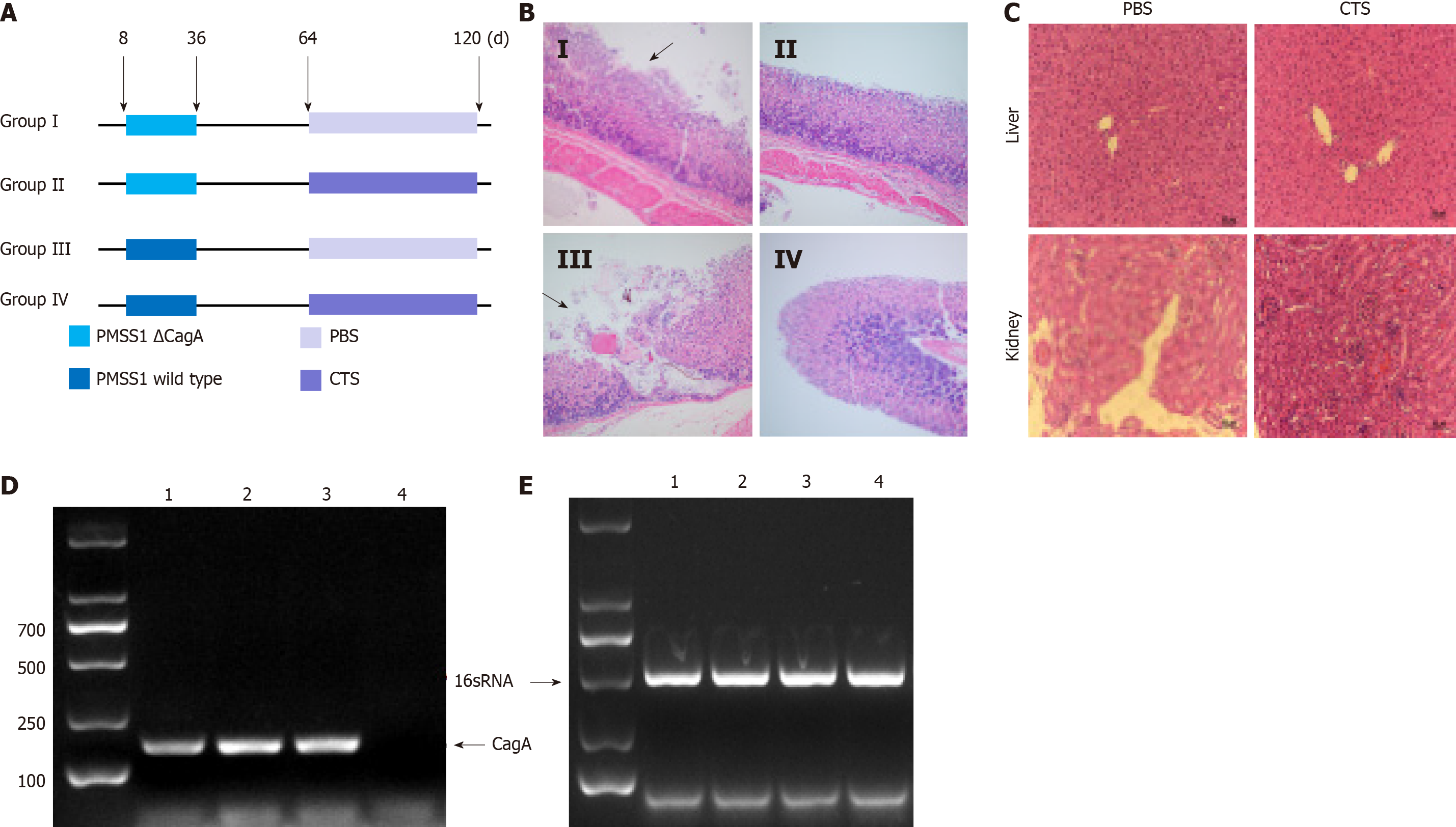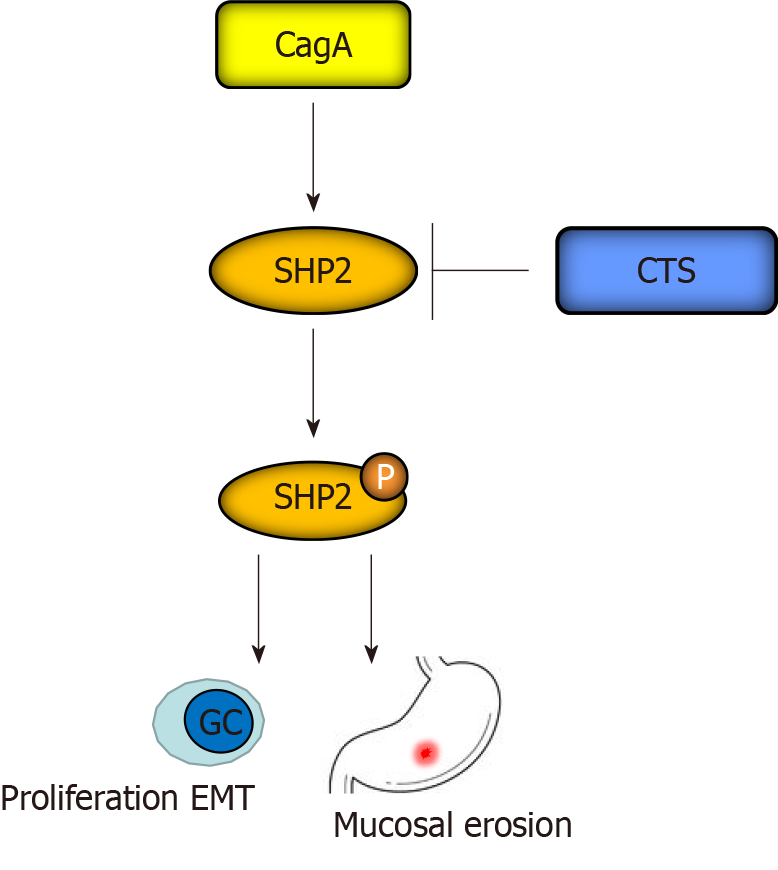Copyright
©The Author(s) 2021.
World J Gastrointest Oncol. Jul 15, 2021; 13(7): 693-705
Published online Jul 15, 2021. doi: 10.4251/wjgo.v13.i7.693
Published online Jul 15, 2021. doi: 10.4251/wjgo.v13.i7.693
Figure 1 Cryptotanshinone suppresses the proliferation of gastric cancer cells.
A: The chemical structure of cryptotanshinone (CTS); B: MGC-803 cells were treated with the indicated doses of CTS for 48 h, and cell growth was detected by the Cell Counting Kit-8 (CCK-8) assay; C: MGC-803 cells were treated with 10 μmol/L CTS for 0–72 h, and cell growth was detected by the CCK-8 assay. Data are expressed as the mean ± SD from triplicate experiments. aP < 0.05; bP < 0.01.
Figure 2 Cytotoxin-associated gene A induces abnormal proliferation and metastasis of gastric cancer cells.
A: AGS cells were transfected with pSR-HA-cytotoxin-associated gene A (CagA) or an empty vector plasmid for 48 h. The expression of CagA protein was assessed by western blotting; B: Cell growth was detected by the Cell Counting Kit-8 (CCK-8) assay; C and E: AGS cells with or without CagA expression were seeded into the upper transwell chamber. The cells were stained and photographed to evaluate migration (C) and invasion (E); D and F: The histograms showed the numbers of migrated (D) and invaded (F) cells. Cells were counted from five randomly selected microscope fields. Data are expressed as the mean ± SD from triplicate experiments. bP < 0.01.
Figure 3 Cryptotanshinone inhibits the cytotoxin-associated gene A-induced proliferation of AGS cells.
A: AGS cells were treated with cryptotanshinone (CTS) (0–10 μmol/L) for 24 h, and proliferation was detected using the Cell Counting Kit-8 (CCK-8) assay. B: AGS cells with or without cytotoxin-associated gene A (CagA) expression were treated with the indicated doses of CTS (0-1.25 μmol/L) for 24 h, and cell growth was detected by the CCK-8 assay. Data are expressed as the mean ± standard deviation from triplicate experiments. aP < 0.05; bP < 0.01.
Figure 4 Cryptotanshinone inhibits the cytotoxin-associated gene A-induced migration and invasion of AGS cells.
AGS cells were transfected with pSR-HA-cytotoxin-associated gene A (CagA) or an empty vector plasmid for 24 h and then treated with the indicated doses of cryptotanshinone (CTS) for 24 h. The cells were seeded into the upper transwell chamber. A and C: The invaded (A) and migrated (C) cells were stained and photographed; B and D: The histograms represent the numbers of invaded (B) and migrated (D) cells. Cells were counted from five randomly selected microscope fields. Data are expressed as the mean ± SD of triplicate experiments. bP < 0.01.
Figure 5 Cryptotanshinone suppresses the expression of Src homology 2 domain–containing phosphatase 2 (SHP2) and the cytotoxin-associated gene A-induced phosphorylation of SHP2.
A: AGS cells were transfected with pSR-HA-cytotoxin-associated gene A (CagA) or empty vector plasmid for 24 h and then treated with the indicated doses of cryptotanshinone (CTS) for 24 h; B: AGS cells were treated with the indicated doses of CTS for 24 h. Western blotting was performed to detect the expression of Src homology 2 domain–containing phosphatase 2 (SHP2) and phosphorylated SHP2. β-actin was used as a loading control.
Figure 6 Cryptotanshinone inhibits cytotoxin-associated gene A-induced mucosal lesions in the stomach of mice.
A: Mice were divided into four groups (n = 8 per group) and received the treatments indicated in the graphical representation; B: After the treatments, the mice were sacrificed, and the stomach was resected for hematoxylin and eosin (H&E) staining. The black arrow shows mucosal erosion; C: The mice were administered cryptotanshinone (CTS) (10 mg/kg) intragastrically for 1 mo, and the toxicity to the liver and kidney was assessed by H&E staining; D and E: Isolated Helicobacter pylori strains were authenticated through the polymerase chain reaction assay using specific primers. 1: Pre-Mouse Sydney Strain 1 (PMSS1) wild-type; 2: SS1 strain-isolated; 3: PMSS1 wild-type-isolated; 4: PMSS1 ∆cytotoxin-associated gene A (CagA)-isolated.
Figure 7 Mechanism by which cryptotanshinone regulates Src homology 2 domain–containing phosphatase 2 and cytotoxin-associated gene A-associated pathogenesis in gastric cancer.
Cryptotanshinone (CTS) suppresses the expression of Src homology 2 domain–containing phosphatase 2 (SHP2), which prevents cytotoxin-associated gene A (CagA) from phosphorylating SHP2. Therefore, CTS inhibits CagA-induced proliferation and the epithelial-mesenchymal transition (EMT) in gastric cancer (GC) and mucosal erosion in the stomach of mice.
- Citation: Chen ZM, Hu J, Xu YM, He W, Meng L, Huang T, Ying SC, Jiang Z, Xu AM. Cryptotanshinone inhibits cytotoxin-associated gene A-associated development of gastric cancer and mucosal erosions. World J Gastrointest Oncol 2021; 13(7): 693-705
- URL: https://www.wjgnet.com/1948-5204/full/v13/i7/693.htm
- DOI: https://dx.doi.org/10.4251/wjgo.v13.i7.693









